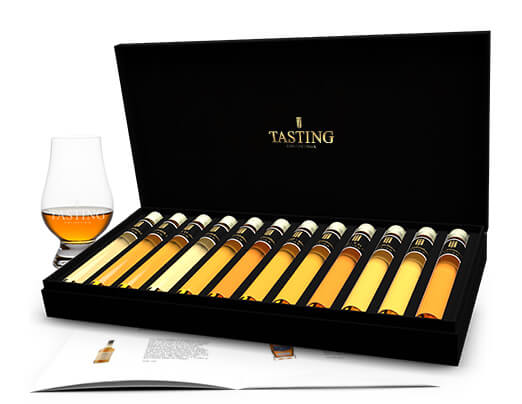Olive oilOlive oil is a vegetable oil extracted by pressing from olives, the fruits of the olive tree. Olive oil has a green or yellow colour, in different shades. The colour has nothing to do with the quality. There are many types of olive trees and they each give their own specific oil. |
The vast majority of olive oil is produced in areas along the Mediterranean Sea. In many Mediterranean countries such as Spain, Italy, Greece, Portugal, France, Tunisia, Turkey, Syria and Morocco, olive oil has been important for millennia with different uses.
Spanish Olive Oil
Spain is the largest producer of olive oil in the world. Nowadays Spanish producers are under strict quality control. The different areas and the cultivated olive variety give different characteristics to the olive oil produced here.
- Catalonië : Siurana and Les Garrigues in
- Andalusië: Sierra Magina, Priego de Cordoba, Baena and Sierra de Segura in
- Midden Spanje: Campo de Montiel and Toledo
The oil from Andalusia is made from the Picual Olive, which makes the oil strong in taste. Very intense, powerful, with a fruity olive fruit balance. Oliën from the north of Spain are often sweeter, softer and not spicy. Some oils have a more grassy or almond character, also depending on the surrounding vegetation. Juices and flavours are passed on to the olive trees through the roots. Traditionally, almond trees are planted between olive trees to control fruit flies and pests.
Portuguese Olive Oil
Portuguese olive oil is generally golden yellow in colour and has a pronounced aroma and a slightly overripe taste. In Portugal, olives are deliberately picked later and sometimes not even deliberately harvested directly from the tree. The late harvest gives the olives their golden yellow colour and the strong aroma and taste.
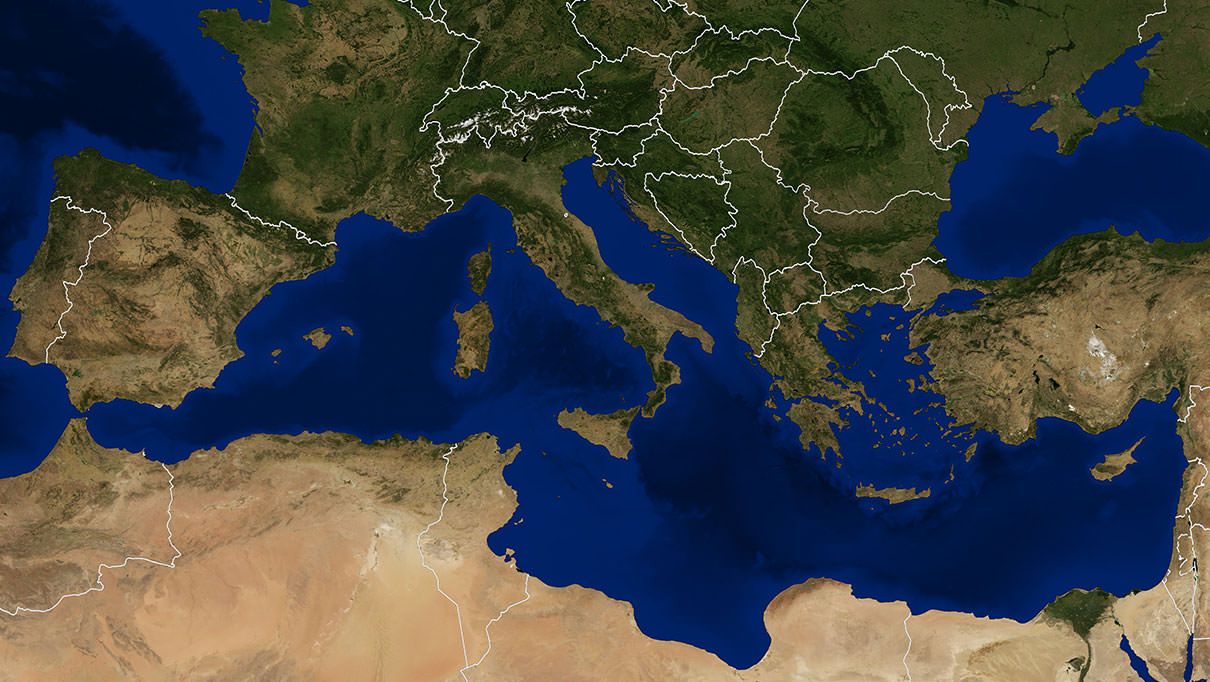
Italian Olive Oil
Italië is a major supplier of good quality extra virgin olive oil. In Umbrië and Tuscany, mainly grass green oil full of character is made with a peppery or spicy finish. In Liguria, in the north of the country, more soft, fresh oils are made.
Greek Olive Oil
According to Greek mythology, olive oil is the gift of the goddess Athena. Nowhere else is the heritage of olive oil so interwoven and connected with everyday life as in Greece. The Greeks consume 21 litres per year per person. For comparison, the Spaniard 12 and we Dutch not even half a liter!
Greek oil comes mainly from the Koroneiki olive. The most famous olive oil areas are Crete and the Peloponese.
French Olive Oil
French olive oil production plays only a minor role in terms of volume. But France, as culinary authority and with the luxurious, touristic appearance of the French Riviera, the appearance of beautiful French olive oil is important for the development of the top segment of olive oil. Because in the South of France there are some areas where beautiful olive oils are made, which must be considered among the most beautiful in the world. Estoublon, Alziari and Le Vieux Moulin are examples of beautiful oils with a soft aroma and different fruit tones, depending on the olives used.
French oils are generally made in the Nyons area (from the Tanche olive) and on the coast, where the Picholine olive is used.
Olive Oil form other countries
Within Europe, of course, olive oil is also produced in Croatia, Bosnia, Albania, Cyprus and Macedonia. In addition, olive oil is produced around Europe in Turkey, Israel, Morocco, Tunisia and other North African countries, as well as on other continents such as the United States, Mexico and Brazil, Australia and even China. However, European olive oil production is by far the largest. In particular, the European Union wants to defend its leading role in the qualitative segment and therefore provides subsidies for the development of this segment.
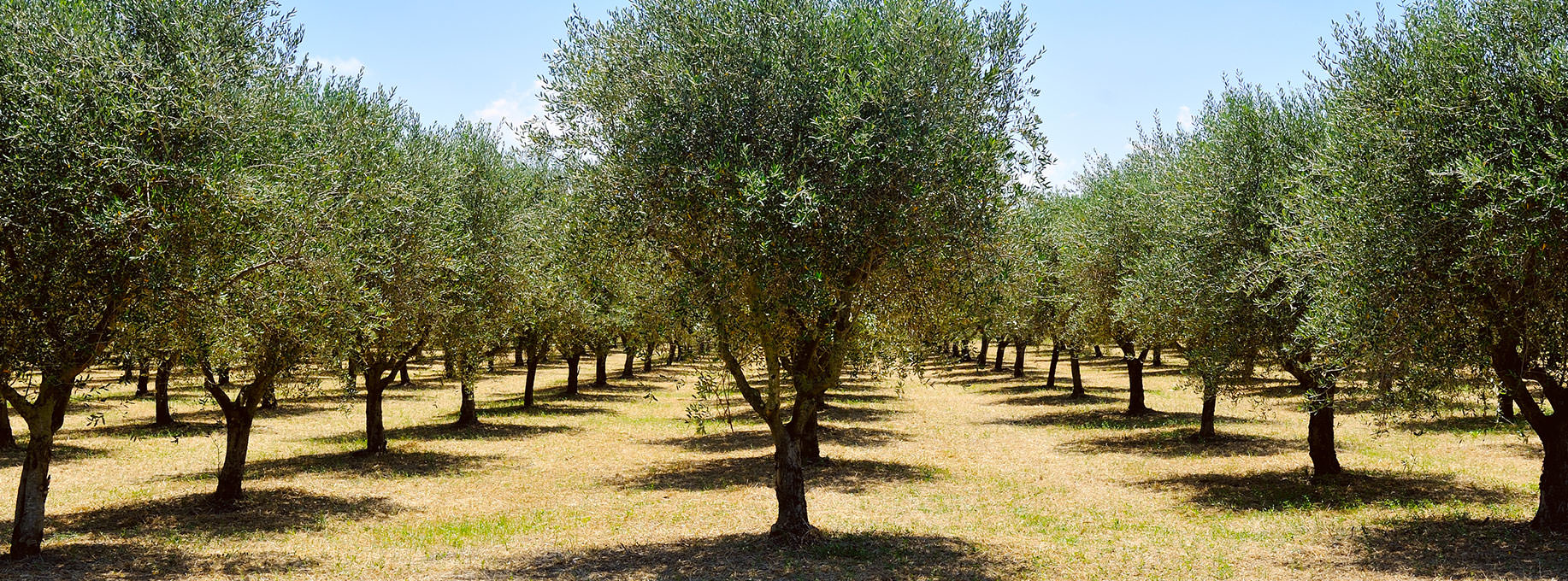
Production
An olive tree produces 5 to 10 kilos of olives per year, enough for 1 to 2 litres of olive oil. 90% of the olives are used for the production of olive oil.
Olive trees are usually harvested from November to January, depending on the type of olives. For the better oil, the olives are often picked by hand. The more common olives are removed by a shaker. The older olives are picked by hand, because the shaker could damage their roots.
Because olives start fermenting quickly after picking, they should be processed as quickly as possible. In a number of process steps, twigs and leaves are removed and the olives are washed and ground into a paste. The oil can then be extracted from this paste. This can be done in two ways, namely by pressing or centrifuging.
Pressing Olive Oil
The olives are pressed 24 hours after harvest. Oil comes from both the flesh and the seeds of the olive. The flesh contains 30-50% oil, the seeds 5%. The olive oil press makes olive oil of different qualities and with different purity. The olive paste is kneaded and pressed, formerly with a screw press, later hydraulically under great pressure to 400 bar. The oil-water mixture from the press is separated in a centrifuge. Although this is called the cold pressing, the pasta is slightly heated by friction but this makes it easier for the oil to come out of the pasta. However, the temperature should not exceed 28 °C, to prevent the chemical composition of the oil from changing. This also applies to the oil after it has been put into the bottle. The first pressing gives a yield of about 10-20% oil at about 15 °C, that is, for 1 liter of olive oil, 5-10 kilos of olives is needed.
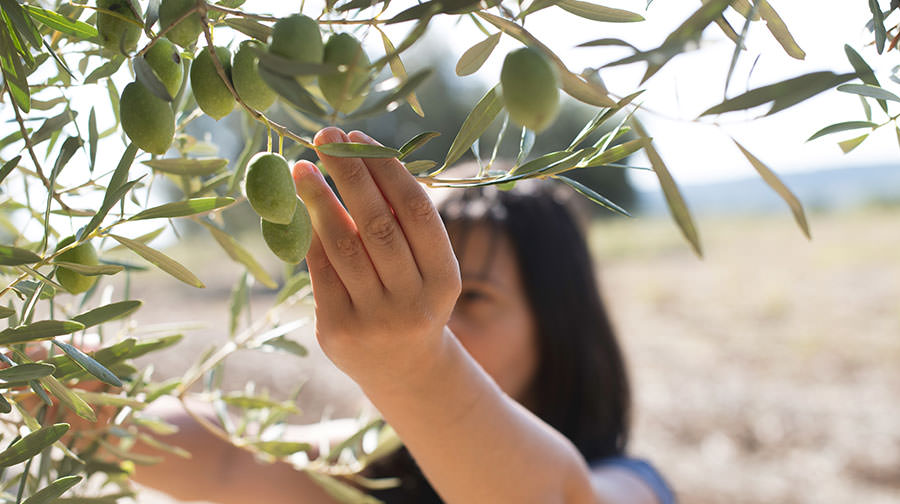
Centrifugation
Nowadays, the moisture (an oil-water mixture) is usually separated from the pulp by means of a centrifuge from the paste. The horizontal drum in the centrifuge is almost 2 metres long and has a diameter of more than half a metre. The drum runs at about 3000 rpm. Around the drum is a sturdy jacket so that the process itself is not immediately perceptible. The advantage of this method is that the stone of the olive remains whole (breaking the stone gives the oil a bitter taste) and that it is a continuous process. Centrifugation cannot be called 1st or 2nd pressing.
The different types of olive oil
Virgin olive oil (Vierge) is made with the mechanical method, where only with pressure is pressed. Nothing was heated and no other means were used. A special form of this is extra virgin olive oil: the most expensive quality olive oil with the most pronounced taste. This is also known as Extra virgin olive oil, which has an acidity not higher than 0.8.
When an oil does not carry the label "extra virgin", it does not mean that it is not good. There are fine pure olive oils, but this is a mixture of refined oil with a little extra virgin oil, which gives the taste. The final difference is that there are less essential nutritional values and the taste is less tasty.
Refined olive oil is obtained by refining virgin olive oil. Refining removes impurities from the oil. The ordinary olive oil has a more neutral taste than the more expensive qualities. This olive oil is a mixture of refined olive oil and virgin olive oil.
Olive pomace oil uses olives that have not been selected first due to size, damage or immaturity. This oil is often of inferior quality, but may have the same characteristics as the above mentioned varieties as a result of processing.
It is possible to measure and taste which type of oil it is. Vierge and especially Extra Vierge oils have no taste deviations, have a lower acidity (expressed in free fatty acid content) and taste more fruity.
Is Olive Oil healthy?
The main ingredient of olive oil consists of fats from the unsaturated oleic acid. It also contains fats from palmitic acid, a saturated fatty acid. A ripe olive contains 15-35% oil, depending on the variety, soil and weather conditions. Olive oil freezes at -6 °C and boiling point is 300 °C.
Olive oil is considered a healthy nutrient. Firstly, the oil is rich in monounsaturated fatty acids, which tend to replace the more harmful fats in the human body. Secondly, olive oil contains a number of substances, such as natural antioxidants, that protect cells from aging. For these reasons, even with a low-fat diet, it may still make sense to consume olive oil.
Vegetable fats contain more unsaturated fatty acids than animal fats. These lower cholesterol and have a beneficial effect on the lipid profile in the blood. However, if unsaturated fatty acids are heated high for a long time, substances can be formed, some of which are carcinogenic.
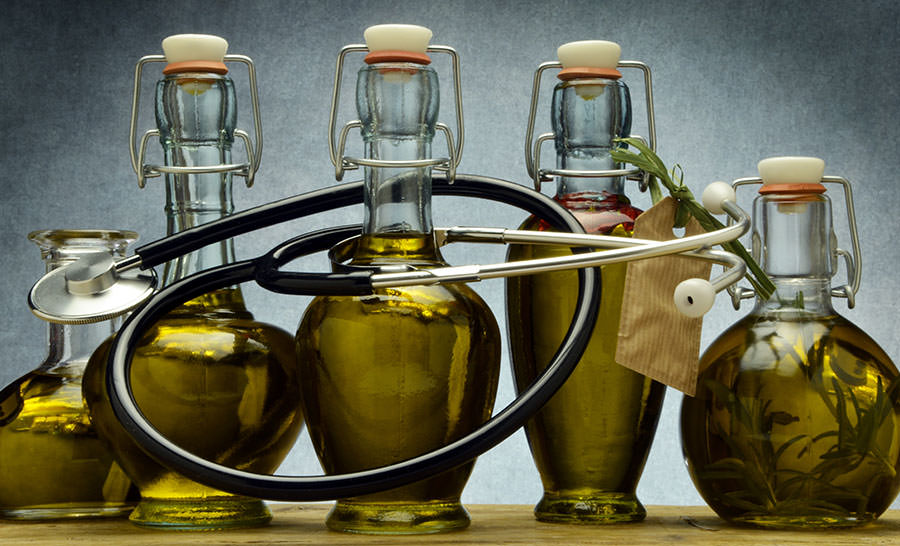
Olive oil decomposes when heated to a temperature of 150°C-200°C for a long period of time. One-time heating of olive oil during woks or frying is not a problem but long and repeated heating as with frying is not recommended. Too hot olive oil should not be used for frying.
Although known and confirmed for thousands of years, the positive effect of olive oil on health is still not fully explained in 2005. It is therefore still a sought-after subject of food research. In September 2005 the journal Nature announced that researchers have found a substance called oleocanthal in olive oil with an effect similar to the painkiller and anti-inflammatory Ibuprofen. Prof. M. Katan, professor of nutrition at the Vrije Universiteit in Amsterdam, stated in Trouw that olive oil is healthy, but not healthier than salad oil or other oils. According to him, the main reason for the health image of olive oil lies in the European Union funded research into the health effects of olive oil. These studies are mainly carried out precisely because there is a surplus of olive oil in Europe.
Tasting and using olive oil
Just like wine, olive oil comes from different regions and countries and can vary greatly in taste, if you buy a good olive oil, taste it well and try different flavors. This is of course very well possible with Tasting Collection, which offers 6 different beautiful extra virgin olive oils from different areas in één collection.
Taste olive oil blind and warm it by holding the glass in your hand. Smell well, first you taste the sweet, grassy taste and later you experience the bitter and peppery feeling. The pepperiness is a sign of vitamin E in the olive oil. A Spanish olive oil goes well with heavier dishes such as Lentils or Chorizo because it is more bitter. Italian oil, on the other hand, has a much fresher taste and goes well with light dishes, such as vegetables and fish.
Extra virgin olive oil is used cold for pasta, salad, vinaigrettes, tapenades and cold sauces. Extra virgin olive oil is not suitable for deep-frying. At this temperature, harmful substances can arise. The ordinary olive oil is purer and therefore better suited for deep-frying. Frying and roasting in extra virgin olive oil is possible, but is not recommended because the taste is largely lost after heating. Just before eating, sprinkle a little extra virgin oil over the (hot) dish. The taste will then come into its own and the aromas will be released better.
Store olive oil in a cool, dark place where there is little light. From pressing, oil can be kept for 1.5 years, from then on the taste will deteriorate more and more.
Olive oil freezes earlier than water. Already at about eight degrees oil becomes thick, this doesn't matter, the oil will melt again by itself.
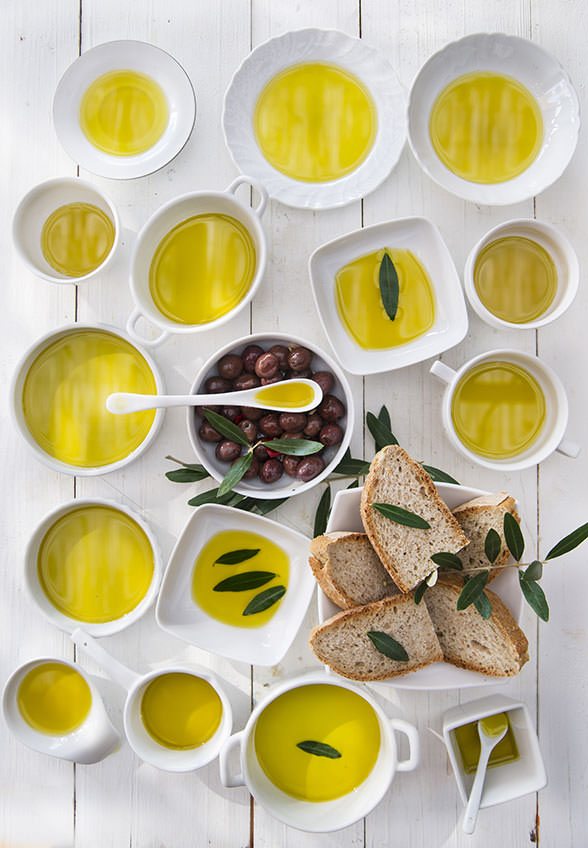
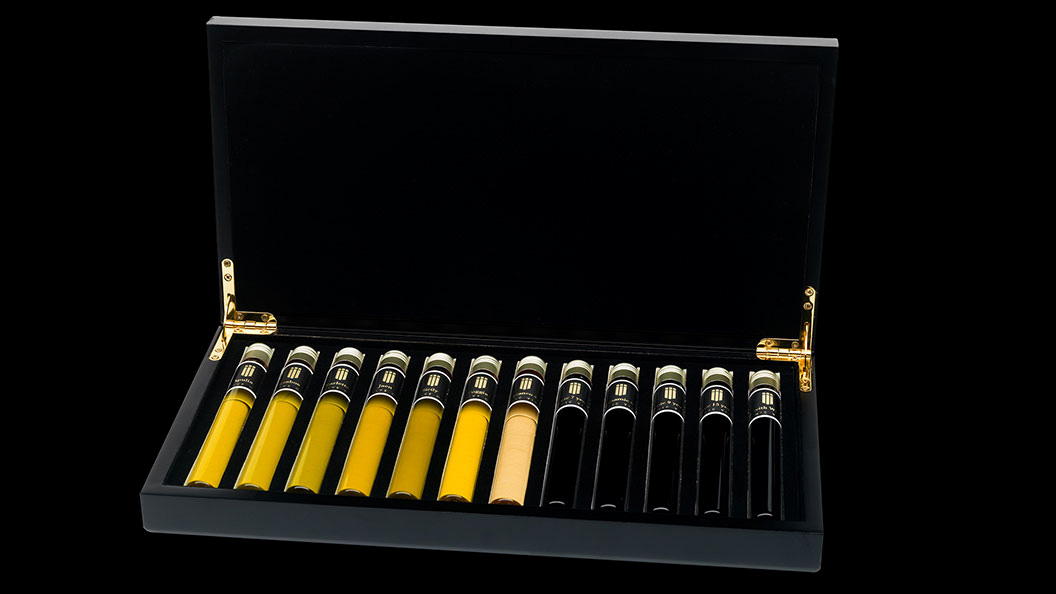
Olive Oil Tasting Collection
Have you become enthusiastic and want to taste the tastiest olive oil? Then order an Olive Oil Tasting Collection, try them all and find out which Olive Oil you like best!

